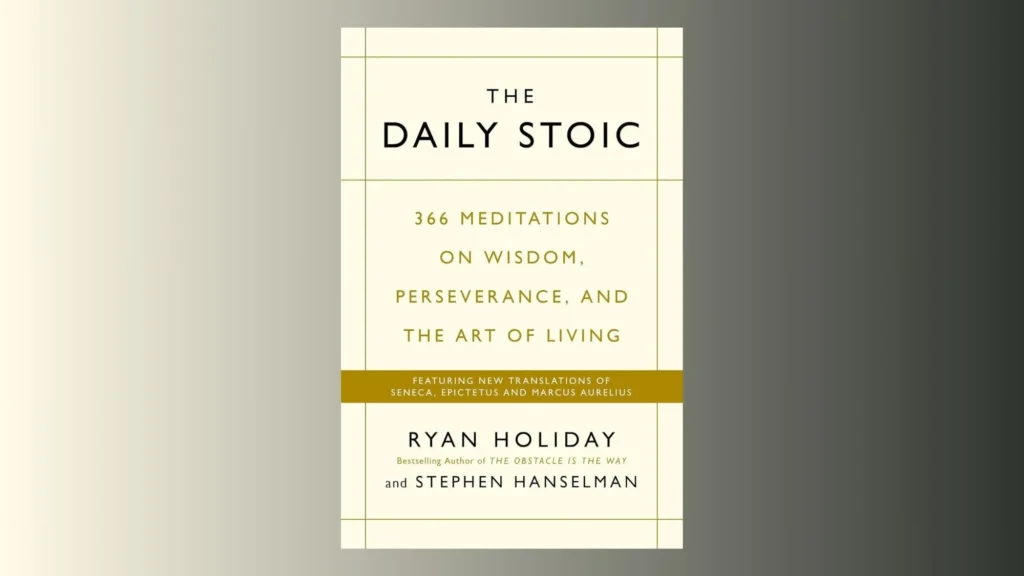
Table of Contents
What is Stoicism?
Stoicism is an ancient Greek philosophy that teaches individuals to live a virtuous life through reason, resilience, and self-control. It stresses the importance of focusing on what we can control and letting go of what we cannot.
More than a philosophy, Stoicism is a practical practice for mastering one’s mind and emotions. It aids in developing mental clarity, emotional strength, and a feeling of peace despite external pressures.
Aim of the Article
We will take this article as an opportunity to understand how Stoicism can help a person master his or her mind and reduce stress while building resilience so that one can handle life’s challenges.
Section 1: Understanding Stoicism
The Beginnings of Stoicism:
Stoicism was founded by Zeno of Citium in Athens around the early 3rd century BC.
The other Stoic philosophers are Epictetus, Seneca, and Marcus Aurelius.
Philosophy Principles of Stoicism:
Superior Good is Virtue: Stoicism claims that only one thing happens to be good, that is, virtue, which consists of living according to nature and reason.
Control What You Can, Accept What You Can’t: Stoics believe we should concentrate our efforts on things we can control (our thoughts, actions, and reactions) and let go of things outside of our control.
Living in Accordance with Nature: This means aligning our desires and behaviors with the natural world and understanding that everything happens for a reason.
The Role of Mindfulness and Self-Reflection in Stoicism:
Stoicism encourages constant self-reflection and mindfulness to stay aware of one’s thoughts and emotions.
Developing an awareness of your inner state helps you make intentional choices, rather than reacting impulsively to external events.
Section 2: Mastering Your Mind through Stoicism

The Role of Rationality in Mastering Your Mind:
Stoicism emphasizes the importance of rational thought over emotional reactions.
Practice rational thinking to calm down and become composed in stressful situations, therefore mastering your mind.
Building mental resilience with the help of Stoic techniques
Negative Visualization:
Imagine the worst that could possibly happen: With this, one reduces the feeling of fear or anxiety about something going wrong. This mental practice is meant to condition you to stay unshaken no matter what happens.
Dichotomy of Control: Divide occurrences into things that you can and cannot control. Concentrate on what you have control over, and learn to let go of the rest.
Premeditatio Malorum: This is a practice of foresight about all the troubles that may come and prepare yourself psychologically for them in advance.
How to React to Negative Emotions:
Negative emotions, such as anger, fear, and frustration, according to the Stoics, arise from bad judgments.
In Stoicism, instead of being an emotional reaction, you will be taught to reflect on your thoughts and negate false beliefs.
Turning Obstacles into Strength:
As Stoicism goes, challenges become avenues for personal growth.
Difficulty should be learned as a challenge in building inner strength.
Related: Fixed Mindset vs Growth Mindset – A Complete Guide to Transforming Your Thinking 2025
Section 3: Stoic Practice in Daily Life: Taming Your Mind
Daily Reflection in the Morning and in the Evening:
Begin every day reflecting on your goals, values, and how you will stay virtuous given the external events.
End every day reflecting on what you are doing, on both success and areas of failure.
The Keeping of a Stoic Journal:
Journaling is another powerful Stoic practice that helps to evaluate your thoughts, actions, and emotional responses.
Discuss your thoughts, hardships, and success by using this journal to better your mindset.
Mastery of Response:
Act only after reflection and not a reaction. Stressful situations at the workplace or other personal failure moments require one to take time out and think before acting.
This Stoic response of “think before acting” will give one control over one’s emotions and thought process.
Stoic Meditations and Mindfulness:
Practice mindfulness: focus on the present moment, observe your thoughts without judgment.
Meditate on Stoic principles to cultivate a sense of inner calm and clarity.
Section 4: The Daily Stoic: A Guide to Integrating Stoicism into Your Life
What is “The Daily Stoic”?
“The Daily Stoic” is a modern interpretation of Stoicism, often popularized by books like “The Daily Stoic” by Ryan Holiday and Stephen Hansel man.
It offers daily meditations, practical guidance, and counsel to help one incorporate Stoicism into daily practice.

How to Use “The Daily Stoic” for Your Personal Growth:
Read a few lines every day and reflect upon what it implies and how you would apply it.
Use each Stoic lesson each day as something to master over your mind in order to bolster your emotional hardiness.
Related: Best Self Help Books & Personal Development: 18 Essential Reads for Personal Growth
Gaining a Stoic Mind: The Power of Consistency
The secret to conquering your mind is consistency. Make it a habit to practice Stoicism daily by journaling, mindfulness, and Self-reflection.
As the days go by, the brain will rewire itself to respond to every challenge in life with calmness and clarity.
Examples of Daily Stoic Practices from Famous Stoics:
Marcus Aurelius: His “Meditations” is a daily guide to Stoic thinking. Each day, he would reflect on his thoughts, his duty, and the importance of humility and virtue.
Epictetus: His teachings are based on maintaining control over your internal state, regardless of external circumstances.
Section 5: Stiffening Up Modern Challenges with Stoicism
How Stoicism Can Help You Deal with Stress and Anxiety:
Stoicism teaches you practical tools to help you deal with stress, such as focusing on things you can control and accepting impermanence in situations.
The outside world will not dictate peace of mind, but your reaction will.
Workplace Stoicism:
Apply the principles of Stoicism to work by keeping focus and avoiding burnout. Strive to do your best; let go of the need for external validation or perfect outcomes.
Learn to manage your emotions and work with others in a way that maintains your internal peace.
Handling Personal Relationships with Stoic Wisdom:
In relationships, Stoicism teaches you to understand the nature of others’ behavior without taking offense.
Practice empathy and remember that you cannot control how others act, only how you respond.
Section 6: The Benefits of Mastering Your Mind with Stoicism
Inner Peace and Resilience:
Mastering your mind with Stoicism allows you to feel inner peace and be calm even in the presence of adverse situations and bounce back from them.
Increased Emotional Intelligence:

With Stoicism, you cultivate greater emotional intelligence—you are better at being attuned to your emotions and able to manage them.
Sharp Focus and Clarity:
Mindfulness, journaling, and rational thinking all bring mental clarity that enables you to focus on what really matters in life.
Deeper Relationships and Improved Communication
Through mastering your mind and emotions, you can develop better balanced relationships with others.
Related: Family Relationships: 7 Powerful Steps for Unbreakable Family Bonds
Section 7: Misconceptions Regarding Stoicism
Stoicism Is Not About Suppressing Emotions:
Many people think that the school of thought known as Stoicism teaches individuals to suppress one’s emotions. Not at all: Stoicism does not advocate ignoring or denying emotion; rather, it teaches us how to observe and even understand our inner stirrings without becoming the slaves of those emotions.
Stoics feel that anger or fear are natural, but we must assess its appropriateness and respond rationally rather than impulsively. Mastering your mind involves studying the basic cause of emotions and managing it consciously .
Stoicism Is Not About Being Detached from Life:
Detachment and apathy toward life’s pleasures or hardships are what some people think Stoicism encourages. Truth is, Stoicism teaches one to live life fully but with detachment from the outcome.
The aim is not to withdraw from pleasure or pain but to assume an attitude of acceptance and equanimity, knowing that we can enjoy life without attachment to it or suffering more than necessary when things do not go as planned.
Stoicism Is Not Pessimistic:
Another common misconception is that Stoicism is a pessimistic philosophy, focusing too much on hardship and suffering. On the contrary, Stoicism is an optimistic philosophy; it encourages finding peace and growth in any situation, even adversity.
Stoicism teaches that suffering is inevitable, but it’s how we approach and respond to suffering determines our peace of mind.
Section 8: The Science Behind Stoicism and Mental Resilience
The Psychology of Control:
Stoicism’s focus only on what is controllable today is in consonance with other modern psychological tenets, for example, “locus of control.”
These studies have also shown that internal locus of control, that belief that one’s outcomes are somehow controllable by the individual himself, is inversely related to stress and has a positive relation with well-being.
Practicing Stoic principles can help shift our mindset towards a more internal locus of control, reducing feelings of helplessness and empowering us to take charge of our emotional and mental states.
Cognitive Behavioral Therapy (CBT) and Stoicism
Cognitive Behavioral Therapy (CBT) is similar to Stoicism. It focuses on the identification and challenge of negative thought patterns to change emotional responses.
Stoicism provides the path towards identifying false thoughts (such as believing that our self-esteem would be hurt from external forces) and substituting them with sane ones.
Again, it mirrors CBT tools like cognitive restructuring, where patients are helped to judge the reality of their thought, and hence become more inclined toward healthier and rational thinking patterns.
Neuroplasticity and Stoic Interventions:
Neuroscientific studies actually indicate that regular mental practices such as mindfulness, journaling, and positive reflection can impact the brain and lead to lasting changes—a concept called neuroplasticity.
By repeating Stoicism every day, you’ll rewire your brain to concentrate on gratitude, resilience, and emotional regulation.
It simply means practicing mental strength and getting all the strong mind and emotional strength you can get to train your mind towards better mental clarity.
Section 9: Advanced Stoic Practices for Taming Your Mind
The Art of Amor Fati or Love of Fate:
Amor Fati refers to the essential Stoic art that teaches us to love every experience in our life, pleasant or unpleasant as part of destiny. You’ll stop wishing things weren’t so; instead, you learn to be loving of obstacles and challenges.
This habit shifts your mindset from frustration to acceptance and gratitude. It is a powerful tool for mastering your mind by reframing adversities as opportunities for growth and learning.
The Art of Long Contemplation:
Stoics like Marcus Aurelius spent a lot of time in contemplation, often meditating on the impermanence of life, the importance of virtue, and their place in the universe.
The ability to tap into profound reflection provides you with more insight both within yourself and in the world.
Take at least one hour every day to sit quietly, reflect on your actions, and ponder how you might become more virtuous in your life every day.
The Discipline of the Will:
Another Stoic exercise is developing the “discipline of the will,” that is, building your ability to tolerate hardship and do what is in your power regardless of the outside circumstances.
Training your will by practicing delayed gratification, being clear on intentions, and maintaining commitments, develops your will and builds your mental strength.
It is essential in mastering the mind, especially during tempting moments or trying situations.
Virtue and the Stoic Social Circle:
Stoicism also teaches the importance of surrounding yourself with virtuous individuals who can support and challenge you on your journey.
A supportive Stoic community, whether physical or virtual, provides motivation and accountability for mastering your mind.
Engage with others who value wisdom, self-discipline, and rationality. In addition to solitary practices like journaling and meditation, seek out discussions, books, and social interactions that reinforce your commitment to living in accordance with Stoic principles.
Related: Building a monk mindset: How to build your focus and self-discipline in an unpredictable world 2025
Section 10: Real-Life Applications of Stoicism
Overcoming Failure with Stoic Wisdom:
Life, of course, has failures, but it is how we take these failures that will dictate our degree of success in the future. Stoicism teaches one to regard failure not as a misfortune but as learning.
By applying Stoicism, such as the Dichotomy of Control, you can then separate your own worth from whatever happens with your pursuits.
Failure isn’t who you are, though how you react towards it can enhance your character as well as give you resilience.
Related: Failure is the Key to Success: Powerful Reasons Why Setbacks Fuel Growth 2024
Conflict Resolution Through Stoic composure:
Conflict is indeed a part and parcel of all human relationships as well as relations at work place. Stoicism teaches you the art of how to remain still and rational amid disagreement.
Take a moment to reflect on your values, goals, and the impact of your response before reacting impulsively. A Stoic approach to conflict emphasizes mutual respect, self-control, and understanding the bigger picture.
Building a Stoic Career:
In the modern world, career success often requires managing stress, expectations, and external pressures. Stoicism provides a solid foundation for remaining focused and resilient amidst challenges.
Whether you’re dealing with office politics, long hours, or pressure to perform, using Stoic principles such as not focusing on what is out of your control, cultivating gratitude, and embracing challenges as opportunities for growth will guide you down the path to success.
Section 11: Fruits of a Daily Stoic Practice
Consistency breeds mastery:
Like any skill, mastery over one’s mind comes from repetition. Such practice can be achieved through meditation, journaling, or simple reflection by Stoicism’s daily practices; you start to reframe your way of thinking and reacting to external events.
As time passes, you find yourself shifting in response to stress, setbacks, and success; thoughts become clearer, and emotional responses become more measured.
Building a Stoic Routine:
A daily Stoic routine could be a powerful tool in personal change. This may include practices such as:
Morning Meditation: A way to wake up with a direction of intent and how you would like to face the day.
Journaling: A reflection of your thoughts, actions, and feelings to determine places needing development.
Evening Reflection: A reflection of your behavior, lessons learned, and adjustment for better tomorrow.
Long-Term Results of a Stoic Mindset:
As you continue to integrate Stoic principles into your daily life, you will experience long-term benefits such as improved emotional regulation, greater resilience to stress, and an enhanced ability to make rational, thoughtful decisions.
Over time, these small daily practices accumulate to a more peaceful, purposeful, and fulfilling life.
Conclusion
Stoicism: The Key to Mastering Your Mind
Learning to master your mind is not overnight; it is a journey that takes commitment, reflection, and continued practice.
Stoicism offers a practical, timeless philosophy empowering you to take charge of your thoughts and reactions to better face life’s challenges with calmness, clarity, and resilience.
Start Your Stoic Journey Today
Start to incorporate Stoicism into your daily life, maybe through morning reflections, journaling, or taking a moment to pause before you react to those difficult situations.
Mastery of the mind will lead you to inner peace, emotional resilience, and a much greater sense of fulfillment.
Be a Stoic
Remember that the Stoics didn’t claim to have all the answers, but they did provide a roadmap for how to live a virtuous, meaningful life in the face of adversity.
By embracing their teachings, you too can unlock the power to master your mind and live a life that reflects your highest values.


